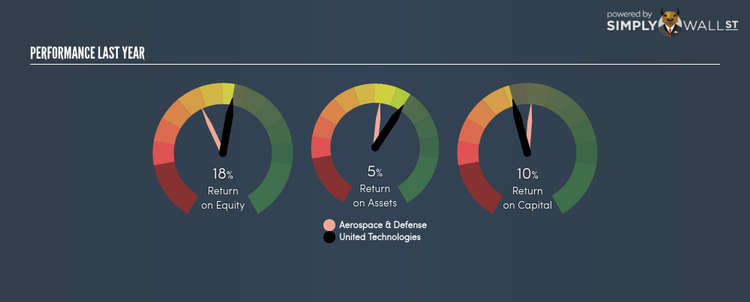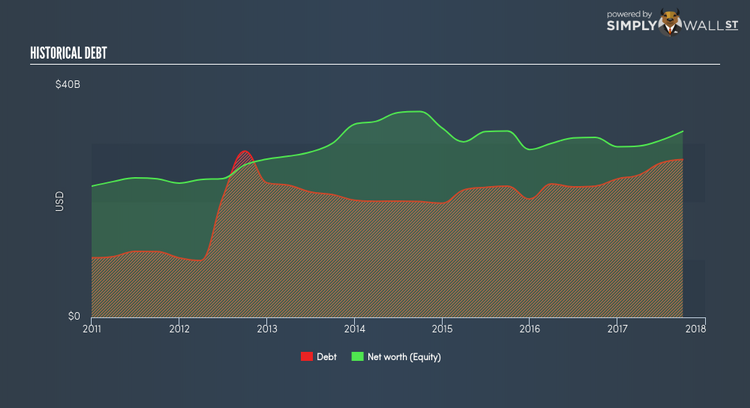What You Must Know About United Technologies Corporation’s (NYSE:UTX) ROE

United Technologies Corporation (NYSE:UTX) outperformed the Aerospace and Defense industry on the basis of its ROE – producing a higher 17.59% relative to the peer average of 12.01% over the past 12 months. Superficially, this looks great since we know that UTX has generated big profits with little equity capital; however, ROE doesn’t tell us how much UTX has borrowed in debt. In this article, we’ll closely examine some factors like financial leverage to evaluate the sustainability of UTX’s ROE. See our latest analysis for United Technologies
Breaking down ROE — the mother of all ratios
Return on Equity (ROE) is a measure of United Technologies’s profit relative to its shareholders’ equity. An ROE of 17.59% implies $0.18 returned on every $1 invested. In most cases, a higher ROE is preferred; however, there are many other factors we must consider prior to making any investment decisions.
Return on Equity = Net Profit ÷ Shareholders Equity
Returns are usually compared to costs to measure the efficiency of capital. United Technologies’s cost of equity is 8.80%. Given a positive discrepancy of 8.79% between return and cost, this indicates that United Technologies pays less for its capital than what it generates in return, which is a sign of capital efficiency. ROE can be broken down into three different ratios: net profit margin, asset turnover, and financial leverage. This is called the Dupont Formula:
Dupont Formula
ROE = profit margin × asset turnover × financial leverage
ROE = (annual net profit ÷ sales) × (sales ÷ assets) × (assets ÷ shareholders’ equity)
ROE = annual net profit ÷ shareholders’ equity
Essentially, profit margin shows how much money the company makes after paying for all its expenses. Asset turnover reveals how much revenue can be generated from United Technologies’s asset base. And finally, financial leverage is simply how much of assets are funded by equity, which exhibits how sustainable the company’s capital structure is. Since ROE can be artificially increased through excessive borrowing, we should check United Technologies’s historic debt-to-equity ratio. Currently the debt-to-equity ratio stands at a reasonable 84.87%, which means its above-average ROE is driven by its ability to grow its profit without a significant debt burden.
What this means for you:
Are you a shareholder? UTX’s ROE is impressive relative to the industry average and also covers its cost of equity. Since ROE is not inflated by excessive debt, it might be a good time to add more of UTX to your portfolio if your personal research is confirming what the ROE is telling you. If you’re looking for new ideas for high-returning stocks, you should take a look at our free platform to see the list of stocks with Return on Equity over 20%.
Are you a potential investor? If you are considering investing in UTX, basing your decision on ROE alone is certainly not sufficient. I recommend you do additional fundamental analysis by looking through our most recent infographic report on United Technologies to help you make a more informed investment decision.
To help readers see pass the short term volatility of the financial market, we aim to bring you a long-term focused research analysis purely driven by fundamental data. Note that our analysis does not factor in the latest price sensitive company announcements.
The author is an independent contributor and at the time of publication had no position in the stocks mentioned.


